If you haven’t been following along in part one, two, or three, check them out before progessing.
So here’s a little exercise to get the pencil moving.
Take one of the songs you previously copied. In each measure, circle the notes that can be found in chord that is over that measure.
Scat the song with the chord tones at ff and the non-chord tones at p.
Notice how most of the notes in the melody are in the chord.
Now, let’s move to the piano and scat the same song as we normally would while we play the letter name of the chord either as half notes, whole notes, or with a slight repetitive rhythm.
It’s not just enough to move the pencil while writing a monophonic melody. The melody needs to be grounded to a harmonic progression, just like the melodies in the songs you copied were anchored to a chord progression.
It’s time to address the chicken and egg conundrum: what comes first - the melody or the chord progression?
The basic is answer is that they occur simultaneously.
The melody is structured around chord tones.
We’re going to “cook book” our first melody/chord progressions to get our feet wet and our pencil moving.
Imagine you need to write a two bar practice etude for a young trumpet student.
The trumpeter knows quarter, half, and whole notes as well as the pitches C, D, E, F, and G.
If you played an instrument as a young child or took a methods class in college, you probably played an etude in your first book that fell into these parameters.
Take your pencil, write your treble clef, 4/4 time signature, and then write those five notes in an ascending line starting on C up to G and directly back down to C. Let’s make them all quarter notes.
Make sure you scat them as you write them.
Scat with a loud voice!
So here’s a little exercise to get the pencil moving.
Take one of the songs you previously copied. In each measure, circle the notes that can be found in chord that is over that measure.
Scat the song with the chord tones at ff and the non-chord tones at p.
Notice how most of the notes in the melody are in the chord.
Now, let’s move to the piano and scat the same song as we normally would while we play the letter name of the chord either as half notes, whole notes, or with a slight repetitive rhythm.
It’s not just enough to move the pencil while writing a monophonic melody. The melody needs to be grounded to a harmonic progression, just like the melodies in the songs you copied were anchored to a chord progression.
It’s time to address the chicken and egg conundrum: what comes first - the melody or the chord progression?
The basic is answer is that they occur simultaneously.
The melody is structured around chord tones.
We’re going to “cook book” our first melody/chord progressions to get our feet wet and our pencil moving.
Imagine you need to write a two bar practice etude for a young trumpet student.
The trumpeter knows quarter, half, and whole notes as well as the pitches C, D, E, F, and G.
If you played an instrument as a young child or took a methods class in college, you probably played an etude in your first book that fell into these parameters.
Take your pencil, write your treble clef, 4/4 time signature, and then write those five notes in an ascending line starting on C up to G and directly back down to C. Let’s make them all quarter notes.
Make sure you scat them as you write them.
Scat with a loud voice!
By now, you have probably noticed that nine quarter notes are one beat too many for two bars.
There’s an easy fix.
With the exception of the very last beat, the low C, make any two consecutive notes of the first seven notes eighth notes.
There’s an easy fix.
With the exception of the very last beat, the low C, make any two consecutive notes of the first seven notes eighth notes.
Success! You should have an exact two bar phrase – seven quarter notes and two eighth notes ( I put my two eighth notes on the second beat of the first measure).
Ok.
Scat it.
Do you like it?
Let’s try some editing.
Think about position the two eighth notes somewhere else in the two bars. Scat it as you write it.
Which version do you like best – the first or second?
If one sounds a lot better than the other, go with the one you like.
If you still think there might be a better place for those eighth notes, keep experimenting by moving the eighth notes while writing and scatting.
We’re looking for the version that sounds most natural when we scat it.
Found the best two bar version for you? Great!
On a new sheet, write out your two bar phrase four times in a row to create an eight bar etude. Scat it as you write.
Remember, loud!
Ok.
Scat it.
Do you like it?
Let’s try some editing.
Think about position the two eighth notes somewhere else in the two bars. Scat it as you write it.
Which version do you like best – the first or second?
If one sounds a lot better than the other, go with the one you like.
If you still think there might be a better place for those eighth notes, keep experimenting by moving the eighth notes while writing and scatting.
We’re looking for the version that sounds most natural when we scat it.
Found the best two bar version for you? Great!
On a new sheet, write out your two bar phrase four times in a row to create an eight bar etude. Scat it as you write.
Remember, loud!
Next, we are going to write a bass note under the first notes of the first, third, fifth, and seventh measures. The four bass notes will be C, a, F, and G.
Give yourself a little four bar C bass ostinato intro before you scat your melody while playing the bass notes.
Imagine your trumpet student playing this etude while you give him a neat little bass rhythm on the piano.
Groovy!
Let’s flesh out those bass notes to full chords; C, a , F, and G. An “A minor chord” is symbolized by a lower case “a”. All lower chase chords will be minor.
Write the eight bar melody again but this time, write the chord names over the first notes of the first, third, fifth, and seventh measures. Scat the etude again while you play whole note chords in your right hand with a simple ostinato bass part in your left hand.
Change the final single bar line into a repeat sign.
This thing will now give “This Is the Song That Never Ends” a run for its money.
Imagine your trumpet student playing this etude while you give him a neat little bass rhythm on the piano.
Groovy!
Let’s flesh out those bass notes to full chords; C, a , F, and G. An “A minor chord” is symbolized by a lower case “a”. All lower chase chords will be minor.
Write the eight bar melody again but this time, write the chord names over the first notes of the first, third, fifth, and seventh measures. Scat the etude again while you play whole note chords in your right hand with a simple ostinato bass part in your left hand.
Change the final single bar line into a repeat sign.
This thing will now give “This Is the Song That Never Ends” a run for its money.
Play it over and over as you scat the melody. No matter how easy the melody is (and it is very easy), keep reading it as you scat it.
Stop – and softly scat the melody while you THINK about the sound of the bass and chords.
You won’t necessarily hear the chords in your mind – but I bet you will feel them and get a different sensation as your eye tracks through each note in your head.
Now write out your melody with new roots under each successive two bar phrase: instead of C, a, F, and G, let’s use C, D, E, and F.
Scat it with these bass notes on the piano.
Feels different, right?
Instead of a C, Am, F, G progression, we’ll use these bass notes to anchor a new progression: C, d, e, and F.
Stop – and softly scat the melody while you THINK about the sound of the bass and chords.
You won’t necessarily hear the chords in your mind – but I bet you will feel them and get a different sensation as your eye tracks through each note in your head.
Now write out your melody with new roots under each successive two bar phrase: instead of C, a, F, and G, let’s use C, D, E, and F.
Scat it with these bass notes on the piano.
Feels different, right?
Instead of a C, Am, F, G progression, we’ll use these bass notes to anchor a new progression: C, d, e, and F.
Try all these chord progressions. Slash chords like F/G means play an F major chord over a G bass note. Scat and play the melody and progression loud two times in a row followed by softly scatting it a capella and feeling the harmony as you scat:
C, am, F, G
Cmaj7, am7, Fmaj7, G7
Cmaj7, am7, Fmaj7, F/G
C, dm, em, F
Cmaj7, dm7, em7, Fmaj7
am, em, F, E
am7,em7, Fmaj7, E7/G#
C, am, F, G
Cmaj7, am7, Fmaj7, G7
Cmaj7, am7, Fmaj7, F/G
C, dm, em, F
Cmaj7, dm7, em7, Fmaj7
am, em, F, E
am7,em7, Fmaj7, E7/G#
Let’s try accelerating the harmonic rhythm.
Instead of two measures for each chord, lets switch chords every measure.
Write out our eight bar phrase and double it to sixteen bars with a repeat sign at the end. Scat while you write.
Try this eight bar progression with one chord per measure.
Instead of two measures for each chord, lets switch chords every measure.
Write out our eight bar phrase and double it to sixteen bars with a repeat sign at the end. Scat while you write.
Try this eight bar progression with one chord per measure.
C, F, b, E, a, D, d, G
Cmaj7, Fmaj7, bm7, E7, am7, D, dm7, F/G
C, G/B, Am, G, F, em7, dm7, F/G
Let’s use our old pattern of two times with piano nice and loud and then softly while you audiate the harmony.
We’ll finish this exercise in “The Songwriter’s Notebook: “Keep Your Pencil Moving” Explained – Part Five”
Cmaj7, Fmaj7, bm7, E7, am7, D, dm7, F/G
C, G/B, Am, G, F, em7, dm7, F/G
Let’s use our old pattern of two times with piano nice and loud and then softly while you audiate the harmony.
We’ll finish this exercise in “The Songwriter’s Notebook: “Keep Your Pencil Moving” Explained – Part Five”
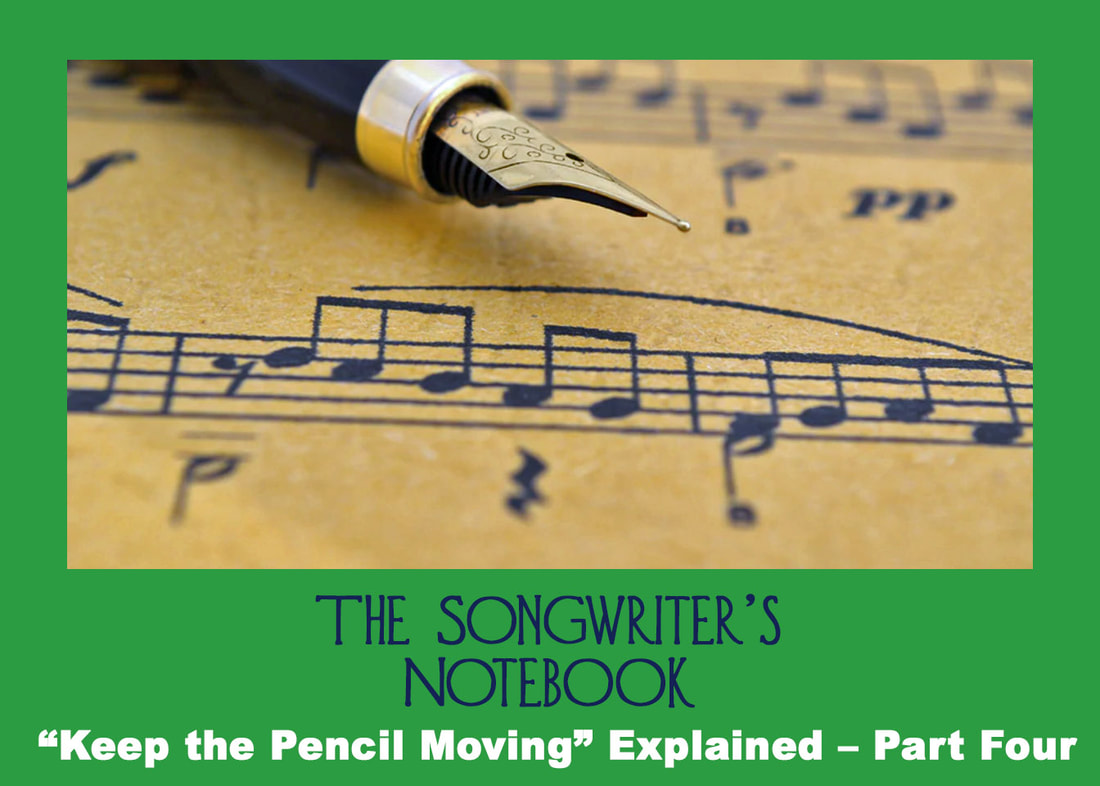


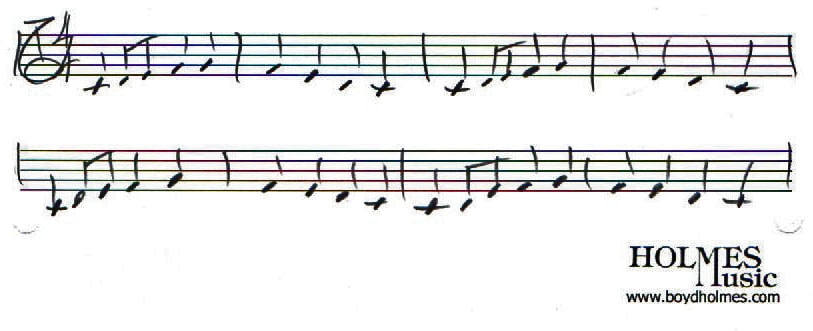
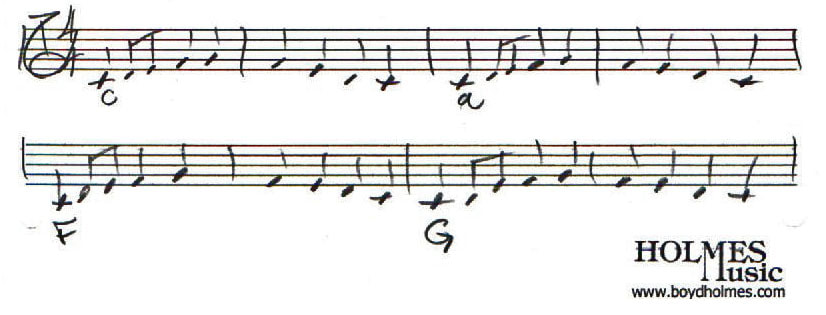
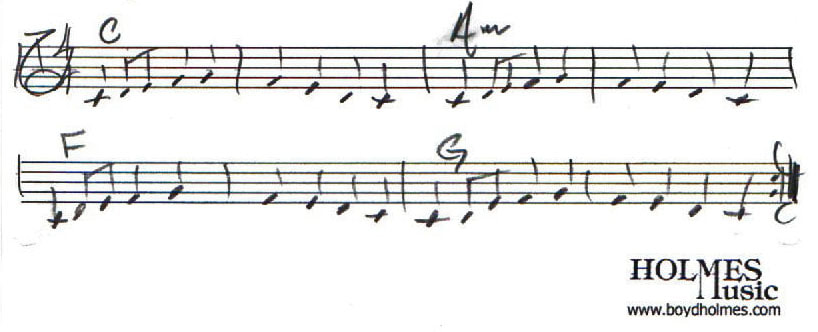
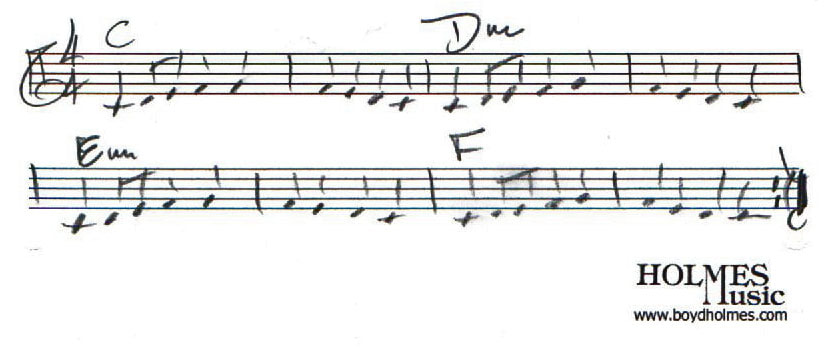
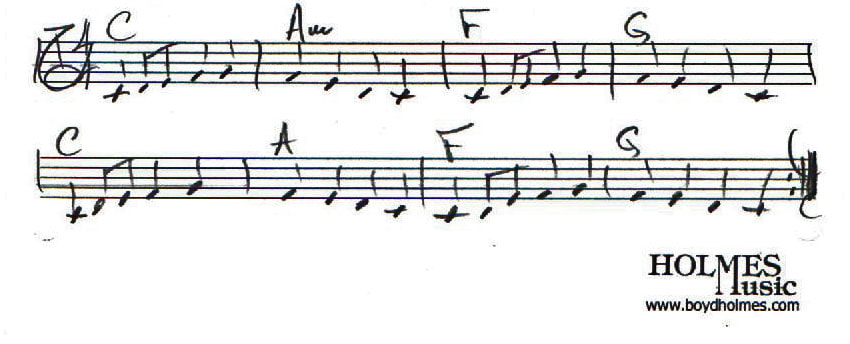
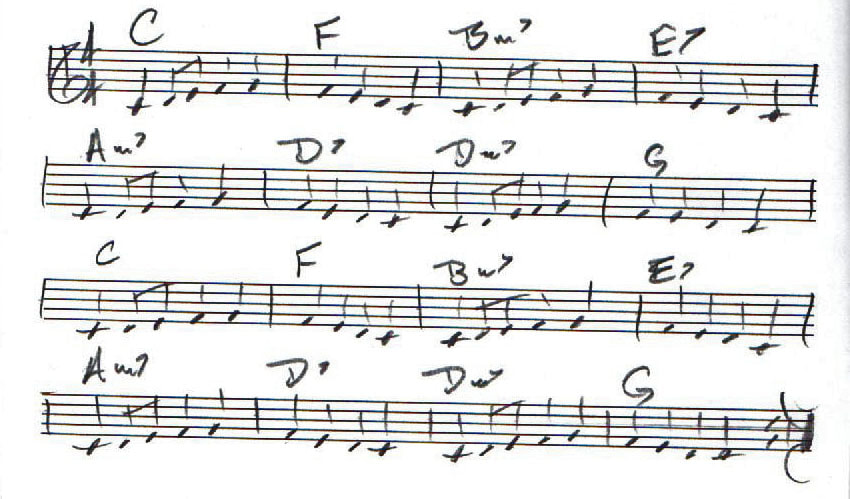
 RSS Feed
RSS Feed